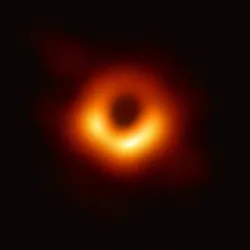14029,89%0,01
42,95% 0,08
50,53% 0,03
5965,27% 0,22
9931,63% 0,00

Black holes have long captivated the imaginations of astronomers and the general public alike. These enigmatic regions of space, where gravity is so intense that nothing—not even light—can escape, continue to be a focal point of research and discovery. Recent advancements in technology and observational techniques have shed new light on these cosmic phenomena, revealing insights that challenge our understanding of the universe.
Black holes are formed when massive stars exhaust their nuclear fuel and undergo gravitational collapse. This process creates a singularity, a point in space where density and gravity become infinite. Surrounding the singularity is the event horizon, the boundary beyond which nothing can escape the gravitational pull of the black hole.
Stellar Black Holes: Formed from the remnants of massive stars after supernova explosions. They typically have a mass ranging from 3 to 20 solar masses.
Supermassive Black Holes: Found at the centers of galaxies, these black holes can contain millions to billions of solar masses. The supermassive black hole in our galaxy, Sagittarius A*, is estimated to be about 4.1 million solar masses.
Intermediate Black Holes: These are theorized to exist but have not been definitively observed. They would have masses between stellar and supermassive black holes, approximately 100 to 1000 solar masses.
The detection of gravitational waves, ripples in space-time caused by the merger of black holes, has revolutionized our understanding of these cosmic giants. In 2015, the LIGO observatory made the groundbreaking discovery of gravitational waves from colliding black holes, confirming a major prediction of Einstein's general theory of relativity.
In 2019, the Event Horizon Telescope (EHT) collaboration achieved a historic milestone by capturing the first-ever image of a black hole's event horizon. The image of M87*, a supermassive black hole located in the galaxy Messier 87, provided visual evidence of black holes and opened new avenues for research.
Theoretical physicist Stephen Hawking proposed that black holes can emit radiation due to quantum effects near the event horizon, a phenomenon now known as Hawking radiation. While it has not yet been observed directly, ongoing studies aim to uncover this elusive radiation and its implications for black hole evaporation.
As technology advances, astronomers are optimistic about unraveling more of the mysteries surrounding black holes. Upcoming missions, such as the James Webb Space Telescope, are expected to provide deeper insights into the formation and growth of black holes in the early universe.
Black holes remain one of the most fascinating and complex subjects in astrophysics. With each new discovery, we edge closer to understanding these cosmic enigmas. As researchers continue to explore their properties, the implications for our understanding of the universe could be profound, challenging what we know about gravity, time, and the fundamental laws of physics.

Veri politikasındaki amaçlarla sınırlı ve mevzuata uygun şekilde çerez konumlandırmaktayız. Detaylar için veri politikamızı inceleyebilirsiniz.